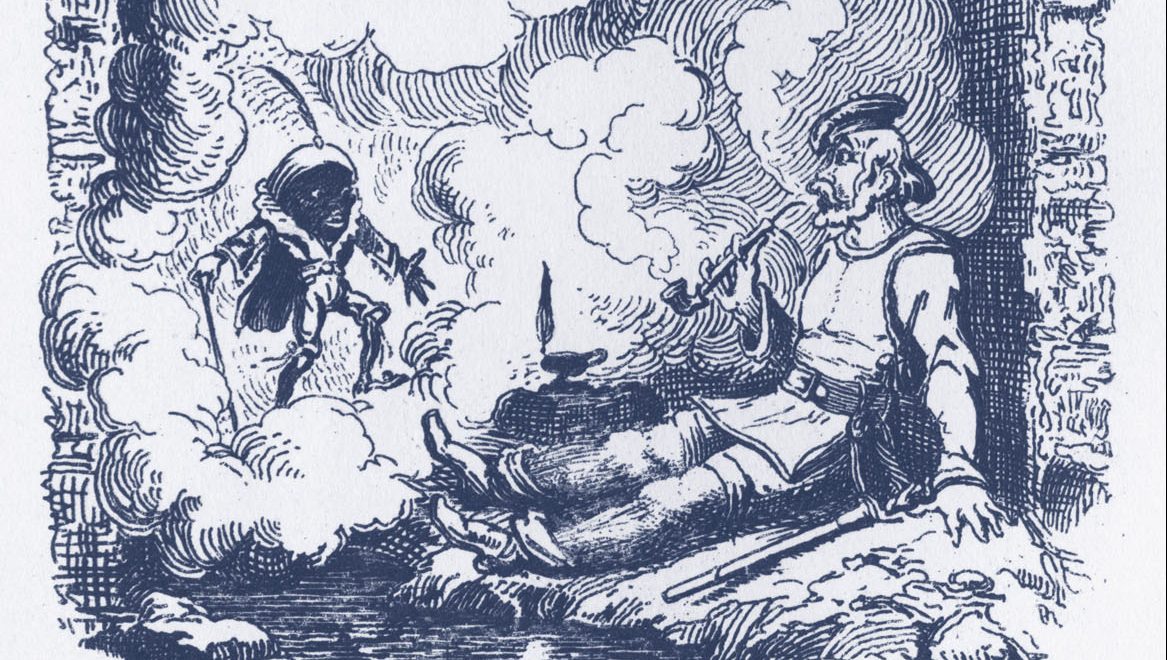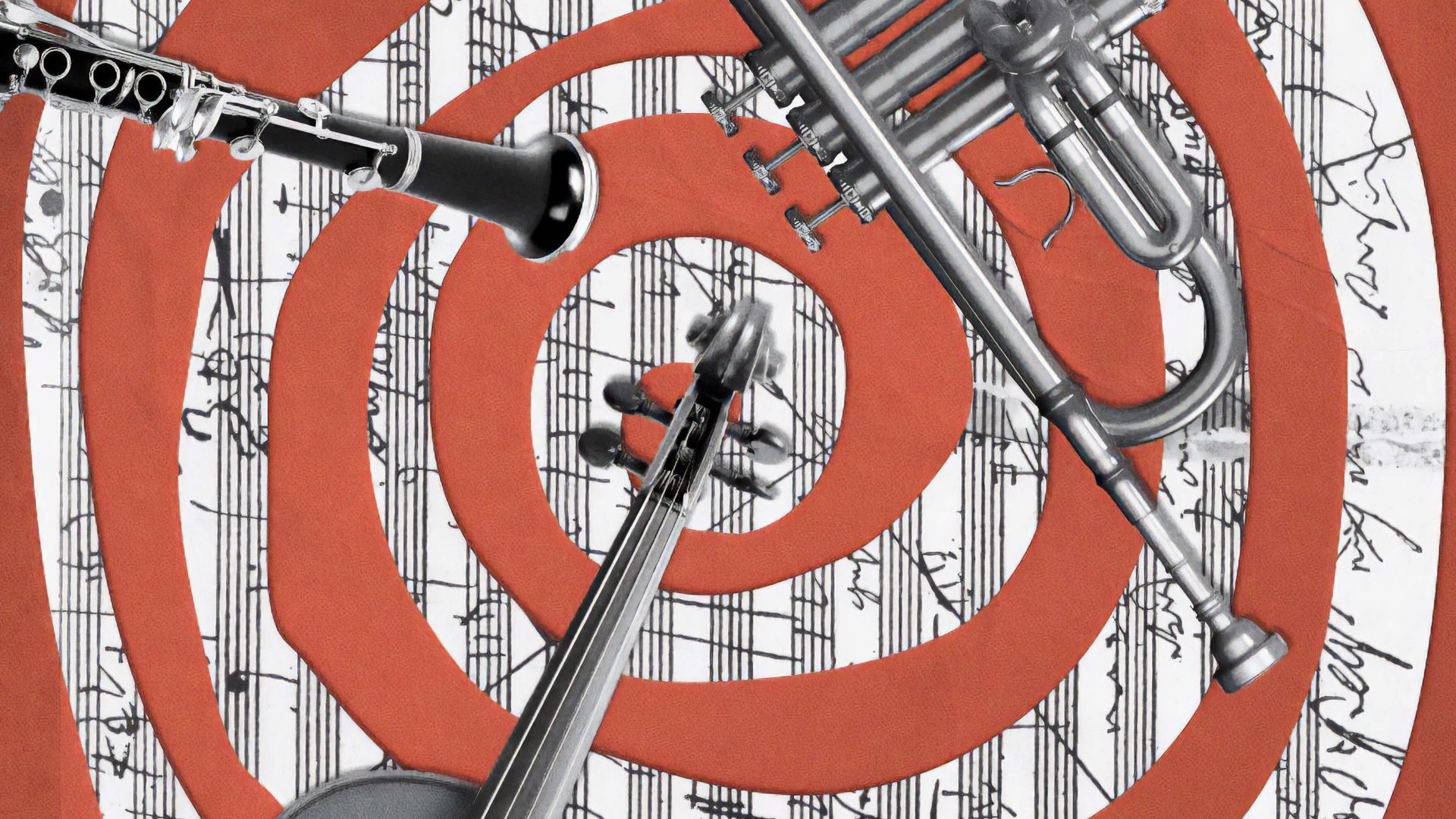One evening a little over two centuries ago, two barristers sat talking and smoking their pipes by a fire in a gentlemen’s club in London. They would not have imagined it at the time, but their post-prandial conversation that night would change the nature of children’s reading in Britain for ever, while opening up our culture to a European influence it has retained ever since.
The two men were talking animatedly about the subject that had made them friends as well as colleagues: Germanic literature. This time, however, instead of their usual lofty discussions of great books and great writers the pair had hit upon an idea that would harness their own literary skills and, they hoped, disseminate their passion among a wider circle than the salon and the coffee house.
By the time they rose at the end of the evening to tap out their pipes, shake hands and make their way home, Edgar Taylor and David Jardine had resolved to undertake the first English translation of a collection of tales published in Germany a decade earlier as Kinder- und Hausmärchen (Children’s and Household Stories) by two folklore-collecting brothers.
In 1823, 200 years ago this year, Taylor and Jardine published German Popular Stories, their translations of 31 folk tales by Jacob and Wilhelm Grimm that introduced to English readers such stories as Hansel and Gretel, Snow White and Rumpelstiltskin. The book became an instant bestseller, setting what became known as Grimms’ Fairy Tales on course to become a cornerstone of children’s bookshelves across the country.
“The translators were first induced to compile this little work by the eager relish with which a few of the tales were received by the young friends to whom they were narrated,” they wrote in a preface to that original edition. “In this feeling the translators, however, do not hesitate to avow their own participation.”
Taylor and Jardine were part of an intellectual elite drawn to London’s cultural hub of post-Enlightenment thinking. Wiltshire-born Jardine was an alumnus of both Glasgow University and the University of Göttingen and had been called to the bar at the Middle Temple, where he met fellow Germanophile Taylor.
A member of a Nonconformist Norfolk family renowned for its scholarship and willingness to look beyond the coast of Britain for cultural fulfilment, Taylor grew up steeped in the literature of Europe. His cousin, Sarah Austin, had travelled widely through Germany in particular and became a sought-after translator, while his Aunt Susannah was famous for the gatherings she hosted in her Norwich home that attracted some of the leading cultural figures of the time – pioneering sociologist Harriet Martineau and philanthropist Elizabeth Fry were regular visitors.
Taylor was a gifted linguist fluent in German, French, Spanish and Italian who chose a legal career, moving to London and establishing a firm of solicitors in 1817. His neighbour on Bedford Row was the barrister and antiquarian Francis Palgrave, who established a correspondence with the Brothers Grimm in 1819 and is likely to have been the catalyst that inspired Taylor to pursue his and Jardine’s translation.
The book was published in 1823 by Charles Baldwyn of Newgate Street, a man whose choice of illustrator for the stories was a significant factor in its success.
In the post-Napoleonic era, George Cruikshank had established a formidable reputation as Britain’s most gifted and feared caricaturist, to the extent that in 1820 he was quietly slipped £100 by the British royal household in order “not to caricature His Majesty [George IV] in any immoral situation”.
In addition to his satirical work, Cruikshank became a renowned and sought-after illustrator of books who would become closely associated with the work of Charles Dickens. Indeed, Cruikshank not only illustrated Oliver Twist, he claimed to have come up with the story in the first place.
Long before his association with Dickens, Cruikshank’s first major book commission had been Taylor and Jardine’s German Popular Stories, his dozen illustrations capturing the atmosphere of the tales perfectly and evoking their European setting in a way that has influenced every adaptation since.
Yet for all the success of German Popular Stories, Taylor and Jardine continued as relatively unknown lawyers dabbling in literary scholarship in their spare time. Having made the inspired decision to translate and publish what would become some of the English-speaking world’s most famous children’s stories, the two men should be household names today. Instead, they were not even household names at the height of the book’s success because German Popular Stories was published anonymously, with only Cruikshank’s and the Grimms’ names appearing on the title page.
The reticence of Taylor and Jardine to attach their names publicly to the project was due to what reads today as a harmless preface setting out their reasons for producing the work and explaining their enthusiasm for the material. Yet their manifesto for the stories went against the prevailing thinking of the time, causing the pair to fear a backlash if their names became known.
Since the Enlightenment had swept across Britain, the nation’s leading cultural and scientific figures had developed an evangelical zeal for reason and literal thinking. Every aspect of personal improvement had come under scrutiny including literature for children, which instead of being designed to invoke wonder had become stultifyingly earnest. It was important, the reasoning went, that young readers be introduced to concepts of science and philosophy at an early age, dismissing old-fashioned story books as mere flimflammery, the antithesis of self-improvement.
“Philosophy is made the companion of the nursery,” wrote Taylor and Jardine. “We have lisping chemists and leading-string mathematicians: this is the age of reason, not of imagination; and the loveliest dreams of fairy innocence are considered vain and frivolous.”
Committed Europhiles, the men knew that across the Channel a rich culture of folk tales was being actively disseminated among children, magical stories designed to inspire and expand the imagination, and develop individual creativity and freedom of thought. Here, however, the importance of storytelling was being smothered by a Gradgrindian zeal for facts.
“Our imagination is surely as susceptible of improvement by exercise as our judgement or our memory,” the pair wrote, “and so long as such fictions only are presented to the young mind as do not interfere with the important department of moral education, a beneficial effect must be produced by the pleasurable employment of a faculty in which so much of our happiness in every period of life consists.”
This kind of thinking placed German Popular Stories firmly in the realm of Romanticism, elevating the Brothers Grimm to a pantheon occupied by the likes of William Wordsworth and Samuel Taylor Coleridge. Sir Walter Scott was mesmerised by the collection, hailing the book in 1826 as “fully better adapted to awaken the imagination and soften the heart of childhood than the ‘good-boy’ stories which have been in later years composed for them” – exactly the kind of reaction Taylor and Jardine had hoped for.
Indeed, far from incurring the wrath of Georgian society, German Popular Stories was a success that must have exceeded Taylor and Jardine’s wildest expectations.
“The translation is uncommonly happy; it has all the freshness and freedom of an original,” said the Times, also praising Cruikshank as “a worthy successor to Gillray” who displayed “an astonishing variety of fancy with great power of expression”.
Most gratifyingly of all, the Grimms themselves were delighted by Taylor’s and Jardine’s work. Jacob Grimm approved of the translation’s concision and even praised the stories as more fluent and readable than the brothers’ original German versions.
The book’s success – a further selection of stories was published three years later in 1826 to similar acclaim – and the resonance of the stories with their readers confirmed to its translators there was a pan-European network of old stories that had travelled the continent over centuries. The Grimm tale Thumbling, for example, bore a close resemblance to the English story of Tom Thumb, which dates back at least to the early 17th century, suggesting a long-established and deep-rooted exchange of tales between Britain and the rest of Europe.
As the preface states, “Strange to say, Jack, commonly called the Giantkiller, and Thomas Thumb landed in England from the very same hulls and war ships which conveyed Hengist and Horsa, and Ebba the Saxon. Who would have expected that Dick Whittington and his cat, whose identity and London citizenship appeared so certain, Tom Thumb, whose parentage Hearne had traced and whose monumental honours were the boast of Lincoln, or the giant-destroyer of Tylney, whose bones were supposed to moulder in his native village in Norfolk, should be equally renowned among the humblest inhabitants of Münster and Paderborn?”
Despite their groundbreaking edition becoming arguably the most important work of translation in the history of literature in English, Taylor and Jardine, while they took immense personal satisfaction from the success of their project, never received the wider credit due to them.
Taylor fell ill with an incurable condition in 1827 and deteriorated slowly towards his death in 1839. Jardine went on to become the police magistrate at Bow Street Court and died in 1860.
Few people have done more to promote European culture and the shared human trait of storytelling in Britain than Edgar Taylor and David Jardine. Two hundred years after the publication of a book that genuinely changed the literary landscape – especially for young readers – perhaps it is time they received the appropriate recognition long overdue.




